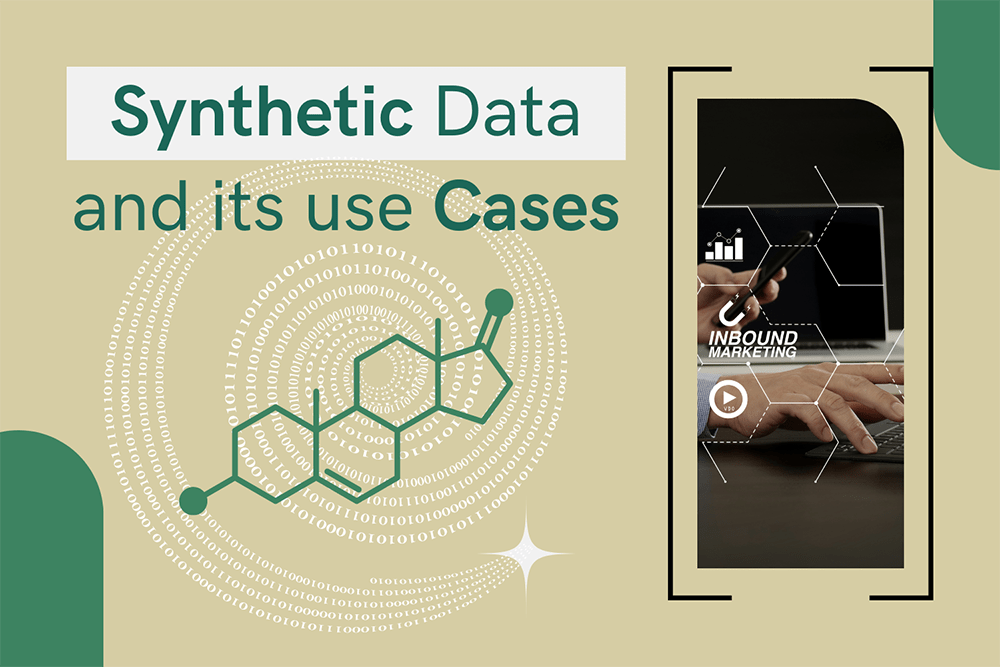Synthetic data is annotated information generated by computer simulations or algorithms as a substitute for real-world data.
To put it another way, synthetic data is generated in digital environments rather than being gathered or measured in the actual world.
Although it is artificial, synthetic data mathematically or statistically reflects real-world data. According to research, it can be as excellent as, if not better than, data collected from actual objects, events, or people for training an AI model.
The advantages of employing synthetic data include minimizing limits when using sensitive or regulated data, adapting data needs to specific conditions that cannot be attained with actual data, and producing datasets for DevOps teams for software testing and quality assurance.
Why is Synthetic Data so important?
To train neural networks, developers want big, correctly annotated datasets. More diversified training data leads to more accurate AI models in general.
The issue is that obtaining and annotating datasets with tens of millions of components takes time and is frequently prohibitively expensive.
According to Paul Walborsky, co-founder of AI.Reverie, one of the first specialized synthetic data providers, a single image that may cost $6 from a labelling service can be artificially created for six cents.
Use Cases of Synthetic Data :-
Synthetic Data in Banking
Synthetic data will be crucial in the future of banking. Access to important consumer and transaction data is becoming increasingly limited. Growing cybersecurity concerns, as well as increased legislative pressure, are just a few of the reasons. Business lines operate in silos, with data owners and data consumers operating as independent organisations. Legacy systems provide an increasing challenge to data architects. Customers want both digital customization and privacy. Concerns about cybersecurity and comprehensive digital transformation have become crucial in the past years. All of these problems, and more, may be solved with synthetic data.
Synthetic data of high quality is GDPR compliant, statistically representative, and adaptable. Generate as much or as little as you need, correct inherent biases, and train high-accuracy models. The companies provide cutting-edge synthetic data generator which excels at handling complicated data structures. The highlights include behavioral data, time-series data, transaction data, and synthetic text. Directly from databases, very realistic synthetic test data may be created.
Synthetic Data in Telecom
Telecommunications firms are now confronting a number of issues. Revenues are declining, laws are tightening, customer expectations are altering, and there is an increased desire for frictionless data exchange. Regulators’ grip on the sector is tightening, and what was previously conventional industrial behavior is no longer acceptable. As a result, recent fines have hammered the sector, such as Vodafone Spain’s record $9.72 million GDPR-fine.
Synthetic data can give a simple, GDPR-compliant data alternative. Synthetic data is now available for monetization and use in AIOps, analytics, and product development. Costs of operations can be lowered, and new income sources can be generated.
Synthetic Data in Insurance Companies
Insurers have always been among the most data-savvy entrepreneurs. It’s no surprise, given that an insurance company’s ability to effectively analyse risk may make or break them. In the future, businesses must use advanced AI and analytics across their operations while remaining compliant with regulations and preserving their consumers’ data.
In all things data-driven, synthetic data is a game changer. Synthetic data may boost the efficacy of your pricing and fraud detection algorithms, increase the accuracy and fairness of AI models, and open data assets that were previously restricted by privacy laws. Realistic synthetic test data will help you provide amazing apps to clients, brokers, and advisers that have been thoroughly tested using synthetic user stories that are equal to those in production.
Synthetic Data in Healthcare Analytics
Healthcare data professionals can employ synthetic data to facilitate internal and external usage of record data while ensuring patient anonymity. This is comparable to the use case for “internal data sharing,” but it is more extensively relevant in healthcare, because most consumer data is private.
Synthetic Data in Customer Analytics
Customer data may be analyzed using synthetic consumer transaction data to better understand customer behavior. This is comparable to the use case for “internal data sharing,” but it is more extensively relevant in banking, because most client data is private.
Synthetic Data in Marketing
To enhance their marketing budget, marketing units can use synthetic data to execute thorough, individual-level simulations. Due to GDPR, such simulations would be prohibited without user authorization. However, synthetic data that mimics the qualities of actual data may be utilized in simulation with confidence.
Synthetic Data in Machine Learning:
For greater accuracy, most ML models demand a significant quantity of data. Synthetic data may be used to enhance the quantity of training data for ML models.
Because limited data sets contribute to mistakes in ML models, predicting infrequent occurrences like as fraud or manufacturing problems is difficult. Synthetic occurrences of such events improve model accuracy.
Synthetic data production generates labelled data instances that are suitable for training. This eliminates the need for time-consuming data tagging activities.


